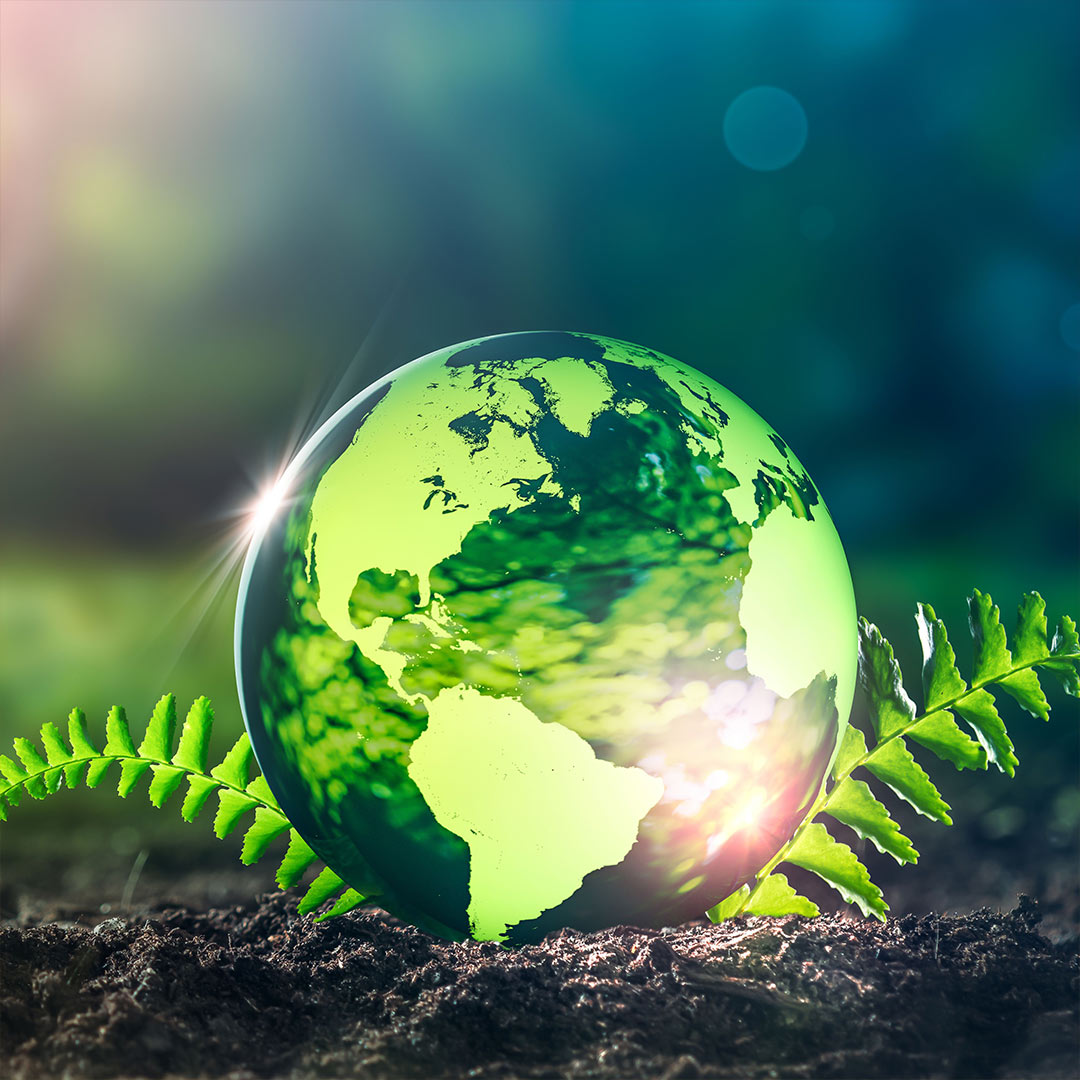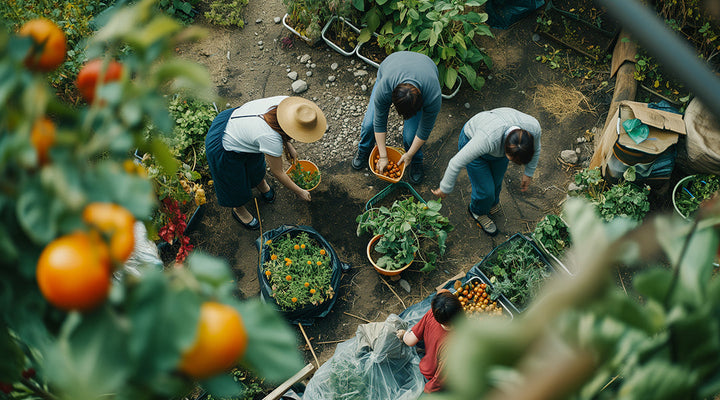
Earth Day Prompts Global Awareness, National Celebration, And Personal Responsibility
Did you know there are more than 1500 national days each year?
World Heritage Day, National Kickball Day, National Banana Day, from silly, to simple, and serious, there’s seemingly a day for everything!
But why? Why do we seek to emphasize or celebrate so many things?
For some of the days on this long list, there’s an element of fun involved, but for the most part, these days are marked as a means of bringing awareness.
Think about it, when it’s National Milkshake Day, you’re more likely to indulge, enjoying this sweet, sippable treat even on an otherwise typically mundane Tuesday afternoon.
When it’s National Sons Day, parents of boys, young and old, are likely drawn to fond memories and gratitude for the blessing of their son(s).
And, when it’s Earth Day, our minds are instinctively drawn to thoughts of this beautiful planet where we live, breathe, and enjoy our years.
However, unlike other national days, when we think of Earth Day, it’s difficult not to ponder the mark we’re leaving here. And, frankly, that’s the entire, and greatly effective, point!
Unlike days that are fun and lighthearted like National Milkshake Day, Earth Day’s beginnings and overall goals carry much more importance and responsibility amidst the celebration of our amazing planet.
So, let’s take a few moments today to pause and consider those very things: importance, responsibility, and celebration, as we dive into the origins of Earth Day.
The History Of Earth Day

Since 1970, Earth Day has been annually celebrated on April 22nd, honoring the anniversary of the onset of the modern environmental movement.
And, the event often credited with the spark needed to ignite this movement began roughly 8 years earlier with the publication of Silent Spring by Rachel Carson.
Carson’s book served to raise public awareness of a problem lying under the surface of humanity for many years prior, the link between pollution, the environment, and public health.
Silent Spring quickly became a New York Times bestseller causing readers across 24 countries to grow in their concern for how environmental destruction truly meant destruction for all living organisms, including mankind.
And, in 1969, Wisconsin junior senator Gaylord Nelson saw a way to keep these fires of concern lit through America's youth.
Student anti-war protests were already common across college campuses, and Nelson sought to infuse this energy “with an emerging public consciousness about air and water pollution.”
From here, Nelson recruited like-minded individuals, such as Pete McCloskey and Denis Hayes, to organize a nationwide campus teach-in. And, as the date fell between spring break and final exams, they chose April 22 for this effort hoping to maximize student participation. From here, Hayes organized a national staff tasked with promoting events across the nation, broadening their efforts to include numerous organizations, faith based groups, and more.
From here, Hayes organized a national staff tasked with promoting events across the nation, broadening their efforts to include numerous organizations, faith based groups, and more.
And, with this expanding base, they decided to change the name of the event to Earth Day in hopes to garner greater participation across the country.
This change gained national media attention, inspiring 20 million Americans on college campuses, in cities, and towns at the time, to “take to the streets, parks, and auditoriums to demonstrate against the impacts of 150 years of industrial development which had left a growing legacy of serious human health impacts.”
Of course, there had already been a growing number of individual groups fighting against environmental tragedies such as oil spills, pesticide usage, toxic dumps, and more, but on Earth Day, these individual groups became one, teaming together over shared values to make their collective voices heard. Earth Day caused a joining of hands across all aisles, Republican and Democrat, rich and poor, urban and rural. And, by the end of 1970, the efforts of this special day led to the creation of the United States Environmental Protection Agency, as well as the passage of laws such as the National Environmental Education Act, the Clean Air Act, and many more.
Earth Day caused a joining of hands across all aisles, Republican and Democrat, rich and poor, urban and rural. And, by the end of 1970, the efforts of this special day led to the creation of the United States Environmental Protection Agency, as well as the passage of laws such as the National Environmental Education Act, the Clean Air Act, and many more.
By 1990, twenty years after the first Earth Day was celebrated, the day’s efforts included not only Americans, but people all across the globe.
In fact, Earth Day 1990 reached more than 200 million people in 141 countries, boosting recycling efforts worldwide and initiating the 1992 United Nations Earth Summit.
And, by the year 2000, Earth Day efforts utilized the power of the internet to bring global awareness to issues like global warming and the need for clean energy.
Today, Earth Day is recognized as the largest secular observance in the world!
And, each year on April 22nd and in the weeks leading up to this date, more than one billion people join together to create and enact change in local, state, national, and global policy, fighting for a clean, healthy environment.
Earth Day And You

Aside from the day’s history, what does Earth Day mean on a personal level?
What do these environmental concerns mean for you and your family?
How can you contribute? What can you do in your own life to impact the environment?
And, what are some ways you can simply appreciate and celebrate this amazing place we call home?
We think we can answer these questions best by exploring the following: importance, responsibility, and celebration.
1- Importance

How important is the environment? Is it really being damaged, depleted, and destroyed?
Let’s cover a few basics here and we’ll let you decide the above answers for yourself…
First, how important is the environment to your health?
Did you know that polluted air can actually cause lung problems, difficulty breathing, as well as allergy and asthma flare-ups?
And, this doesn’t just mean you can stay indoors to avoid the adverse effects of poor air quality.
Outdoor air quality affects indoor air quality…think home, office, and school!
Long term exposure to air pollution can lead to inflammation and is linked to numerous diseases including cancer and heart disease.
And, what about soil and water? Pesticide use on the crops we use for food, even on the items used to make our clothing, leeches into the soil these plants are grown in and can make its way to nearby rivers, streams, and other waterways.
Pesticide use on the crops we use for food, even on the items used to make our clothing, leeches into the soil these plants are grown in and can make its way to nearby rivers, streams, and other waterways.
But, I don’t live near these affected areas, so this doesn't concern me.
It’s not that simple.
Pesticide residue in/on the foods we eat leads to disease and death, plain and simple.
The use of pesticides, herbicides, and fertilizers in the growth of our food supply means there is residue on the foods we consume. And, this chemical residue alone has been linked to cancer and negative impacts on immune, reproductive, and nervous system health.
Pesticides alone, not including herbicides and fertilizers, can cause diarrhea, nausea, blindness, rashes, dizziness, and death.
Even deforestation, an environmental woe often underestimated for its effects on human health, has caused an increase in the spread of life-threatening illnesses such as malaria.
Each threat to the planet poses an equal threat to all life that exists on it, human life, wildlife, plantlife, and all living organisms.
So, for the sake of time, let’s pretend there are only 2 things that negatively affect the environment as a whole. Deforestation - We briefly mentioned deforestation above, so let’s start there. Urbanization, logging, mining, and agricultural croplands prompt the total removal of trees and other vegetation from the land.
Deforestation - We briefly mentioned deforestation above, so let’s start there. Urbanization, logging, mining, and agricultural croplands prompt the total removal of trees and other vegetation from the land.
These acts rob plant and animal life of their natural habitat, and doing so leads to disease, death, and a decrease in biodiversity.
Don’t think the deletion of a single species can have lasting effects?
The removal of the wolf population alone in the Yellowstone National Park caused the disappearance of trees, it rerouted rivers, and removed beavers and various bird species. Their reintroduction then revived the same life once destroyed.
In the case of deforestation, the removal of these habitats has led to the extinction of multiple species.
Currently, orangutans, big cats, pygmy elephants, koalas, and monarch butterflies are all endangered due to deforestation, just to name a few. Depletion Of Natural Resources - Obviously, as human population increases, we use more and more of our planet’s resources. Waste and overconsumption vastly depletes these as well. Even pollution (all types) depletes the earth’s resources at an alarming rate.
Depletion Of Natural Resources - Obviously, as human population increases, we use more and more of our planet’s resources. Waste and overconsumption vastly depletes these as well. Even pollution (all types) depletes the earth’s resources at an alarming rate.
All of these combined rob the earth of water, clean air, and soil at a faster rate than they can be replenished.
If we do not incorporate environmentally friendly, conservative, farming practices…
If we do not curb waste and overconsumption…
If we do not replenish the resources we use as a people…
…the water, air, and soil provided by our planet will essentially run out.
As these resources are depleted, biodiversity is lost, extinction of species continues, floods occur, droughts become more widespread, soil erodes at an alarming rate, the earth warms as greenhouse gases rise, and on and on.
In other words…we must act! We must take responsibility and make appropriate changes.
This is something Nelson, Hayes, and so many other like minded individuals began with the onset of Earth Day in 1970, and it’s something we must continually act upon, responsibly, today and every tomorrow.
2- Responsibility

So, how can we reduce the harm caused to our planet? How can we help?
We’ll get to some ways to positively impact the health of our planet in our everyday lives in a moment, but first, let’s address this subject in light of the two impacts we discussed in the section above: deforestation and depletion.
One way to reduce both of these environmental detriments is by using our planet’s resources sustainably.
Sustainable farming works with the earth, not against it.
Take deforestation for instance, sustainable farming methods add plants to a region instead of removing them, growing crops alongside existing plants promoting biodiversity while protecting plant and animal species across ecosystems.
These methods also negate the use of polluting chemicals like pesticides and fertilizers, protecting the air, soil, and nearby waterways.
These types of farming practices also have a much lower carbon footprint as the production of environmentally damaging chemicals alone consume massive amounts of energy.
As a people, when we commit to consuming products farmed sustainably, we stop the ravaging of land and resources, we protect fragile ecosystems, and we reduce the amount of strain on our planet.
Here at Lifeboost, we not only incorporate organic, sustainable farming methods, we also support organizations that protect our planet.
As we’re a company that ships our products to you, our customers, we’ve taken responsibility here by using EcoCart.
Through our involvement with EcoCart, we reduce the carbon footprint of each order placed with Lifeboost. And to date, by responsibly using this service we’ve offset 281,502 lbs of CO2, which equates to saving 293,461 trees, 4,223 ft of arctic ice, and powers 12,668 light bulbs!
Saving our planet involves both information and responsibility.
Once we’ve been informed, we then are tasked with the responsibility to care for this sphere we call home.
The above listed ways often involve practices by corporations and companies larger than single family homes, but that doesn’t mean you can’t make a difference!
In fact, that’s where it starts…with one person, at home, which combines with the efforts of billions of other individuals to change the world!
3- Celebration

Consider this, the more we realize how amazing we are as an individual, the more we desire to celebrate, protect, and nurture our body (physically, mentally, emotionally).
And really, these same principles apply to our planet!
Realizing and celebrating the Earth’s beauty and abundant provision for our needs leads to a desire to honor and protect her and the resources she brings forth.
So, let’s close out our Earth Day discussion with some ways we can celebrate our amazing planet!
Celebrate Earth by spending time in nature.
Take in her natural beauty through your senses. Can you feel the warmth of the sun on your skin, or a cool chill in the air?
Listen to the birds chirping, the bees buzzing. Recognize the contribution of these small, but significant, parts of the ecosystem where you live.
Walk barefoot on a patch of grass. Can you feel the ground beneath your feet?
Take a walk alone, or with friends and family, in a wooded area. As you move along the path, take in the varying shades of green, the brown soil, the vibrantly colored plant life. Now, pull out your camera, or phone, and take a few photos. Capture the beauty of our amazing planet in these pictures. You don’t have to be a photographer to snap a few pictures in the moment both in present adoration and future appreciation of our planet.
Now, pull out your camera, or phone, and take a few photos. Capture the beauty of our amazing planet in these pictures. You don’t have to be a photographer to snap a few pictures in the moment both in present adoration and future appreciation of our planet.
Are you a parent? Allow your children to draw or color pictures of what they see in nature. Actually, this isn’t just a celebratory task for kids, you can do this as well!
Make a bird feeder and place it in your yard or in the park to feed local birds.
Plant wildflowers near the edge of your property if you live in a rural area to provide bees with both food and habitat which creates resilience in our farming systems.
Plant trees on your own property, or as a community project (with the help and approval of those in your community who know the proper areas and types of trees native to the region).
Go on a scavenger hunt to observe the plant and animal life native to where you live.
And, as you celebrate, increasing your (and your family’s) appreciation for our planet, know that the conscious choices we make to protect our planet are acts of celebration as well.
If you aren’t already, consider doing the following: Reduce, Reuse, Recycle - A few practical ways to incorporate these three positive environmental impacts include…
Reduce, Reuse, Recycle - A few practical ways to incorporate these three positive environmental impacts include…
- Limit what you throw away. Instead, conserve natural resources and reduce landfill waste by repurposing used items, recycling waste, and reducing waste and consumption.
- Plan to walk or bike to work instead of driving. And, if you can’t walk or ride your bike to work or school, seek to carpool.
- Bring reusable bags to the grocery store to cut down on plastic use.
- Conserve the amount of water you use in your home to decrease runoff and wastewater that ends up polluting our oceans.
- Use energy efficient light bulbs to reduce greenhouse gas emissions, and turn off the electricity when not in use. Even consider using solar power if you can!
Consider Composting - This practice cuts down on waste, then when adding it to your lawn, gardens, and other areas it improves the health of the soil as it retains nutrients and water, reduces erosion, and builds resilience to the impacts of climate change.
Choose Sustainably - Choosing sustainably farmed items when you shop stops deforestation and pollution. It promotes biodiversity and negates the use of chemicals that harm the environment and your health. Reduce Chemical Burdens - Besides shopping for sustainably farmed or produced items, be sure to use these (sustainable) practices in your home as well.
Reduce Chemical Burdens - Besides shopping for sustainably farmed or produced items, be sure to use these (sustainable) practices in your home as well.
If you’re planting a garden or maintaining a healthy lawn, don’t use chemical pesticides, herbicides, and fertilizers that harm the planet.
And, inside your home, reduce plastic and use nontoxic cleaners and body care items.
Volunteer - Seek to get involved in your community’s efforts, whether it be planting trees, picking up trash, or initiating and implementing legislation that seeks to protect and preserve our planet.
Educate - GI Joe said it best, “knowing is half the battle.” Responsibility begins with knowledge, and the more we know about our planet, how she’s being harmed and what we can do to change this, the more we can change our course, preserving this Earth and her resources for generations to come.
Check out Lifeboost Coffee Grata Medium Roast.
- https://www.daysoftheyear.com/coming-up/
- https://www.earthday.org/history/
- https://education.nationalgeographic.org/resource/earth-day/
- https://www.colorado.edu/ecenter/2021/04/15/history-and-importance-earth-day
- https://newsinhealth.nih.gov/2018/09/breathe-easier#
- https://www.epa.gov/report-environment/indoor-air-quality#
- https://www.who.int/news-room/questions-and-answers/item/food-safety-pesticide-residue#
- https://www.pesticidereform.org/pesticides-human-health/#
- https://e360.yale.edu/features/how_forest_loss_is_leading_to_a_rise_in_human_disease_malaria_zika_climate_change#
- https://defenders.org/blog/2020/03/we-were-wrong-about-wolves-heres-why#
- https://standfortrees.org/blog/deforestation-effects-on-animals/#
- https://www.tyfinefurniture.com/blogs/blog/species-going-extinct-due-to-deforestation-5-endangered-animal-species-as-forests-decline
- https://www.theworldcounts.com/stories/consequences-of-depletion-of-natural-resources
- https://www.conserve-energy-future.com/causes-effects-solutions-depletion-natural-resources.php#
- https://www.nrdc.org/bio/lena-brook/organic-agriculture-helps-solve-climate-change#
- https://www.rainforest-alliance.org/insights/what-is-sustainable-agriculture/#
- https://www.rainforesttrust.org/our-impact/global-scope/
- https://www.epa.gov/recycle/composting-home#
- https://oceanservice.noaa.gov/ocean/earthday.html
- https://www.fastweb.com/student-life/articles/eight-simple-ways-to-help-the-environment
- References for the article to confirm data and information.










